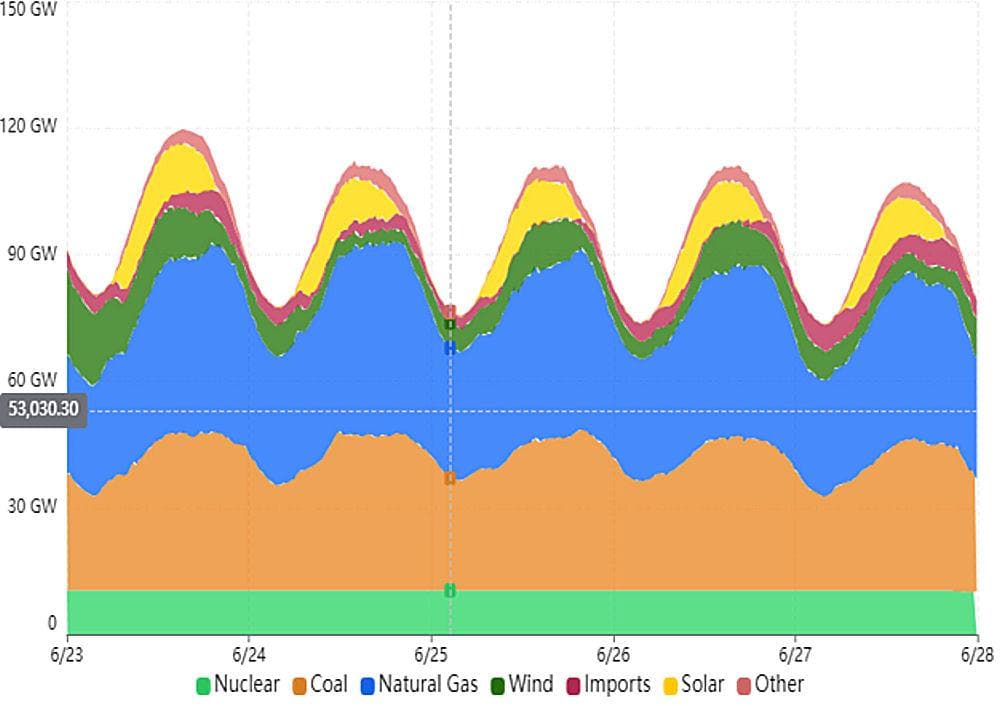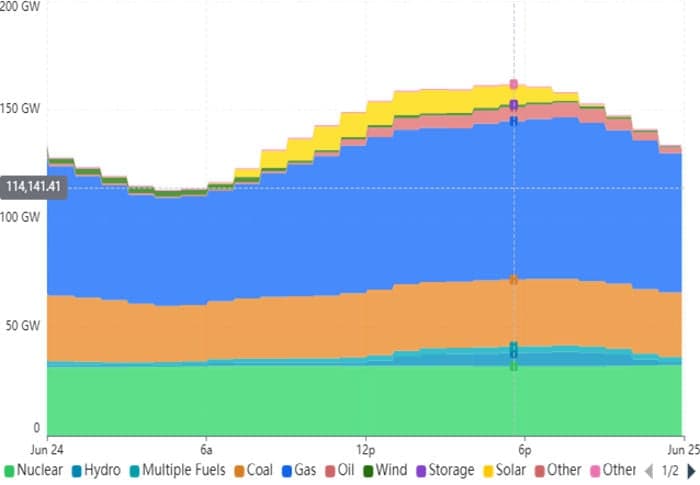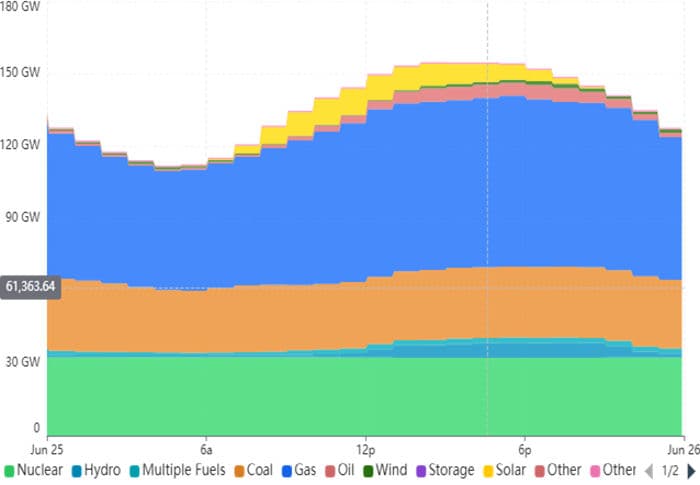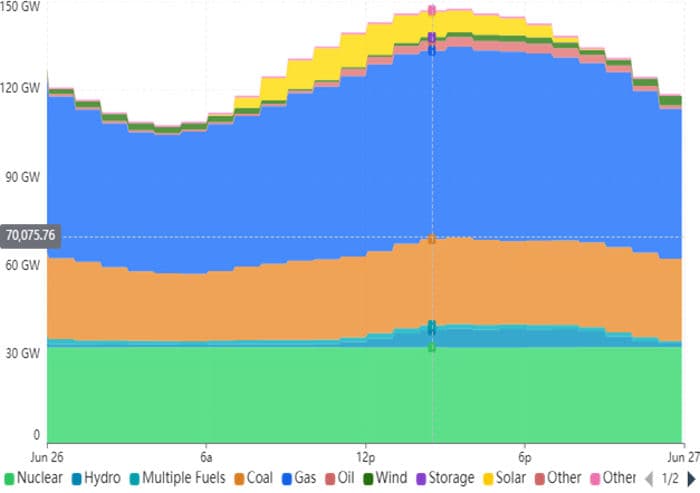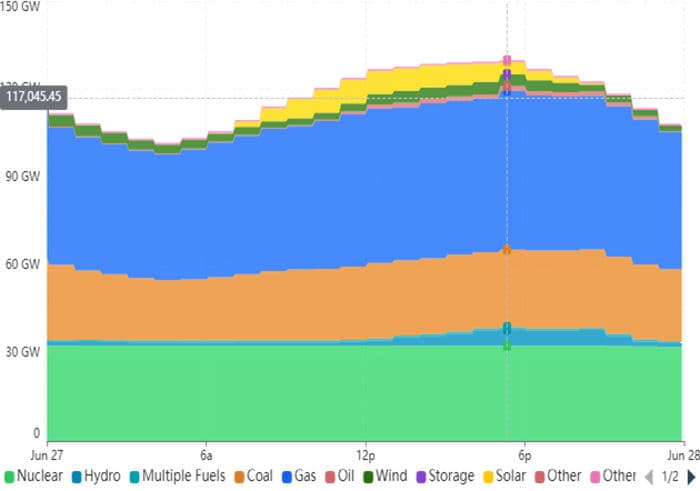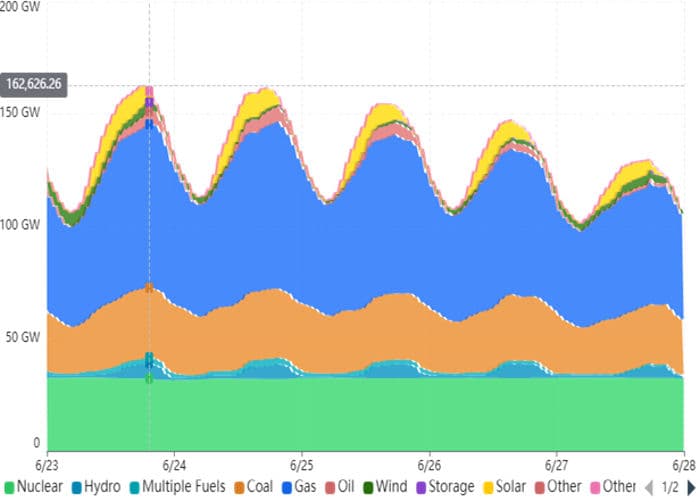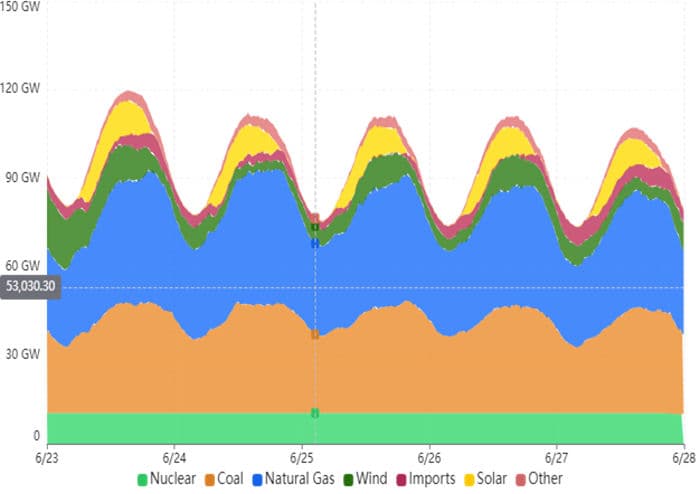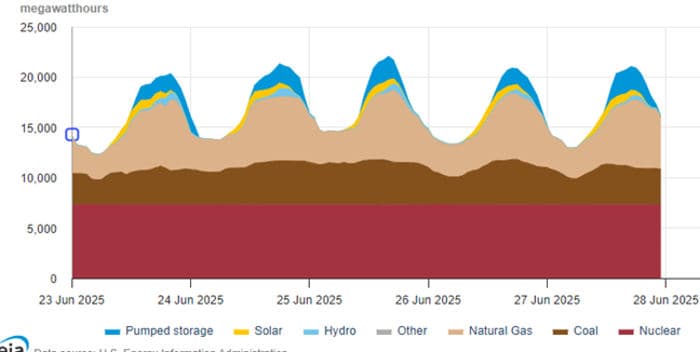The US Middle Atlantic and Southeast states experienced five days in a heat dome from June 23-27, 2025. This extensive heat dome stressed the electric generation, transmission and distribution resources of the region, including those of the Pennsylvania / New Jersey / Maryland (PJM) Regional Transmission Operator (RTO), the largest ISO in the US. PJM issued an emergency declaration in anticipation of the effects of this heat dome on demand and consumption, requiring all generation resources to be available for full capacity operation throughout the period, as displayed on the PJM Live Dashboard.
The graphs below show the sources and magnitudes of the generation resources employed throughout the five days.
On Monday, June 23rd, demand peaked at approximately 160 GW, including 7.73 GW of solar and 4.52 GW of wind. Natural gas generation was adjusted to follow growing load from 44.32 to 72.93 GW. Hydro and oil generation were also increased to meet peak.

On Tuesday, June 24th, demand again peaked at approximately 160 GW, including 8.87 GW of solar and 1.22 GW of wind. Natural gas generation was adjusted to follow growing load from 49.7 GW to 74.38 GW. Hydro and oil generation were again increased to meet peak.

On Wednesday June 25th, demand again peaked at approximately 155 GW, including 9.15 GW of solar and 1.0 GW wind. Solar had peaked earlier at 10.85 GW. Wind peaked later at 1.79 GW. Natural gas generation was adjusted from 49.19 GW to 70.79 GW throughout the day. Hydro and oil generation were also increased.

On Thursday, June 26th, Peak demand decreased to approximately 147 GW, including 7.45 GW of solar and 1.6 GW of wind. Solar peaked earlier at 10.81 GW. Wind peaked later at 3.21 GW. Natural gas generation was adjusted from 46.9 GW to 64.73 GW to meet demand. Hydro and oil generation were also increased.

On Friday, June 27th, demand peaked at 130 GW, with solar at 7.02 GW and wind at 3.98 GW. Solar peaked earlier at 8.14 Natural gas generation was adjusted from 44.37 GW to 54.13 GW to meet demand. Hydro and oil generation were also increased.

Nuclear generation remained constant throughout the week at 32.71 GW. Coal generation varied from approximately 20 to 25 GW. The maximum renewable contribution did not exceed 11 GW during the week. Storage made no significant contribution, although PJM does have pumped hydro storage available.
The chart below summarizes the PJM experience through the heat dome, showing the contributions of the various generating sources through the period. Fortunately the heat dome began to dissipate after the first two days, providing some relief to the natural gas and oil generation resources.

The chart below summarizes the Midwest Independent System Operator (MISO) experience during the heat dome. MISO adjusted both coal and natural gas generation output to match demand. Wind made significant contributions on days one, three and four. MISO also took advantage of electricity imports from adjacent utilities on all five days, as well as undefined “other” resources.

The chart below summarizes Duke Energy (Carolinas) experience during the heat dome event. Duke adjusted both coal and natural gas generation to meet peak demand. Duke also relied on significant pumped storage on peak, as well as hydro. There was very limited solar contribution and no wind contribution on peak.

It appears that all three systems operated without significant disruption during the heat dome. However, all three systems appear to have experienced significant stress during the period. It is clear in all cases that these systems remain heavily reliant on coal and natural gas generation. It will be important for all three systems to continue to operate their existing coal generation plants to maintain generating capacity until new generation resources can be brought online to replace them and meet expected demand growth.
